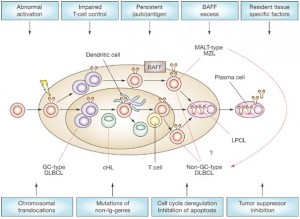Not all patients have their asthma well-controlled by ICS therapy, even at high doses and combined with other agents. Responses to ICSs are variable, as follows: some patients show little improvement in lung function or AHR when exposed to medium-to-high ICS doses; others show good responses. Genetic factors may influence ICS responses. T cells isolated from black patients have lower corticosteroid responsiveness than those from white patients. Body mass index (BMI) may contribute to ICS variability. 
The number of asthma control days while receiving beclomethasone therapy decreased with increasing BMI in a pooled analysis, with similar relationships seen between BMI and other asthma outcomes. Corticosteroids recruit histone deacetylase to the activated gene transcript complex, resulting in histone deacetylation and suppressing inflammatory gene transcription Viagra online. In asthma patients who smoke, however, oxidative and nitrative stress markedly impair the enzyme, reducing the sensitivity to ICS therapy.
The following two inflammatory subtypes of treatment-resistant asthma have been described: the eosinophil-positive phenotype associated with increased levels of T lymphocytes, mast cells, macrophages, and neutrophils; and a neutrophilic phenotype with few eosinophils and generally normal levels of other inflammatory cells. Treatment-resistant asthma appears to be associated with evidence of increased tissue injury and remodeling. The eosinophil phenotype has significantly greater basement membrane thickness, which is correlated with the number of eosinophils; lung function differs only marginally between the two subtypes Dapoxetine online.
Airway remodeling may reflect a tissue repair mechanism, while corticosteroid resistance may develop from abnormal communication between the injured airway epithelium and underlying tissue layers. Nevertheless, patients with treatment-resistant asthma may benefit from additional antiinflammatory therapy. In patients with severe asthma who had persistent sputum eosinophilia despite therapy with high-dose ICSs or oral prednisone, administering high-dose IM triamcinolone resulted in nearly complete disappearance of sputum eosinophils and improvement in FEV1, suggesting that a short course of systemic corticosteroids may reset the function of the steroid receptors and overcome relative steroid resistance.